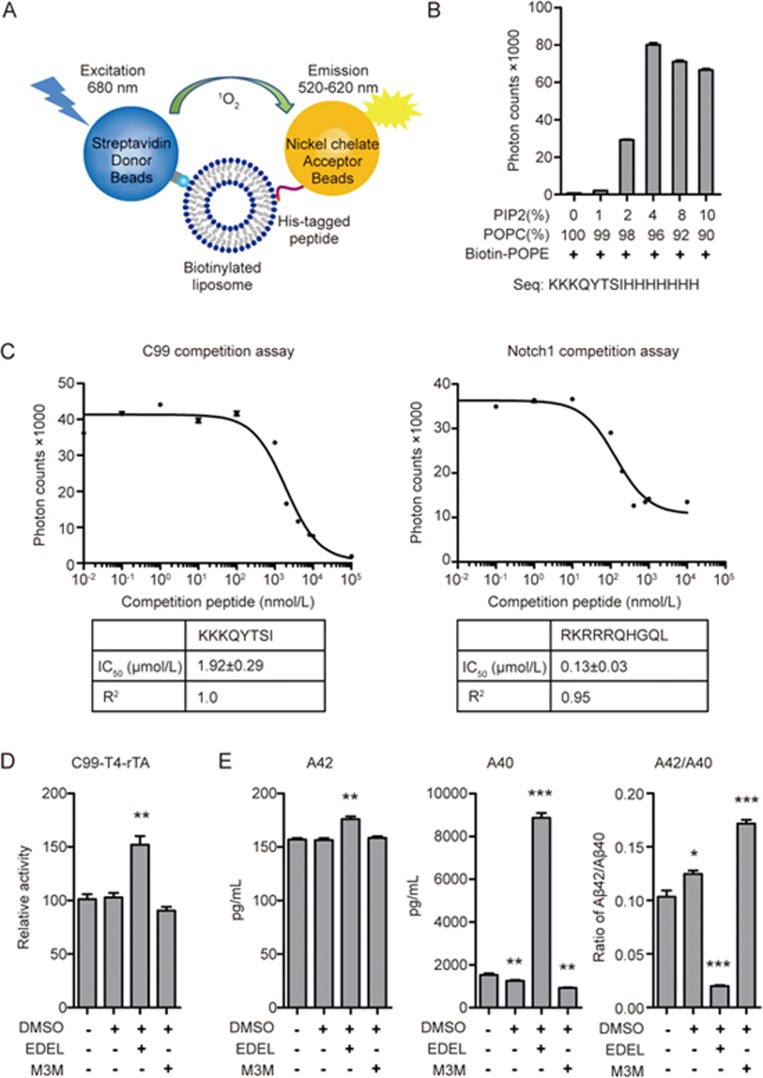Figure 7.
Modulations of PIP2 levels correlate with C99 cleavage levels. (A) Schematic of the AlphaScreen Assay. Biotinylated liposome binds to Streptavidin-coated donor beads, and the nickel chelated acceptor beads bind to His-tagged peptide. The interaction between His-tagged peptides and biotinylated liposome brings the two beads into close proximity to generate a light emission signal. (B) Validation of PIP2 binding by C99 polybasic peptide. The PIP2 lipid content varies from 0 to 10%. Underneath is the sequence of His-tagged C99 polybasic peptide. (C) Competition assay of C99/Notch1 polybasic peptides in presence of 4% PIP2. The IC50 values were obtained from curve fitting using the GraphPad Prism competitive inhibitor model. (D) Modulations of PIP2 levels by the PLC pathway inhibitor edelfosine (EDEL) and the PLC activator m-3M3FBS (M3M) led to changes in total C99 cleavage. Cleavage was measured by the Epsilon-Cleavage assay. (E) Modulations of PIP2 levels affect Aβ40 levels and Aβ40/Aβ42 cleavage ratios as determined by AlphaLISA assay. Absolute concentrations were calculated using a previous calibration graph. Error bars=SEM, n=3, P-values (two-tailed Student's t-test versus WT): *P<0.05; **P<0.01, ***P<0.001.

